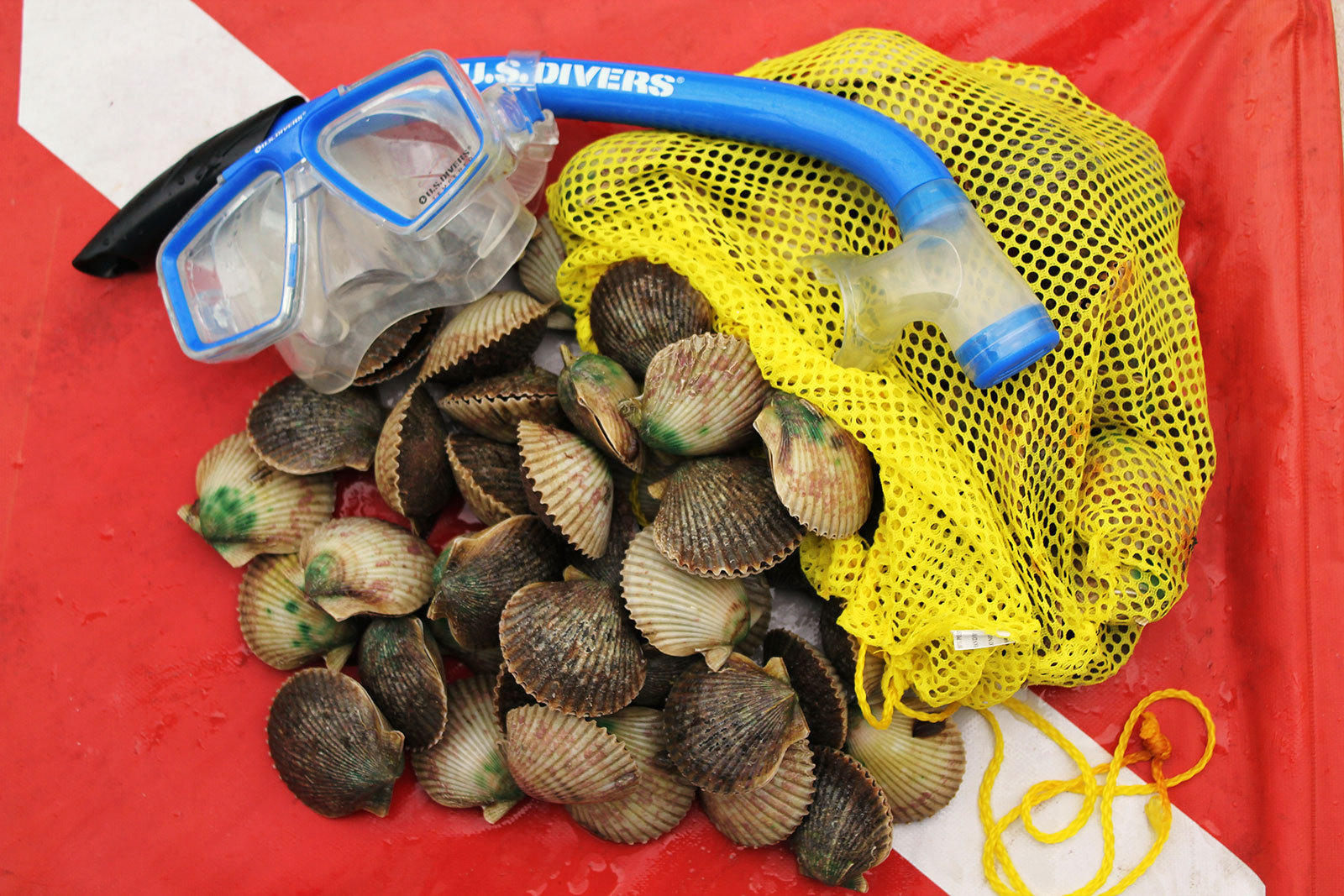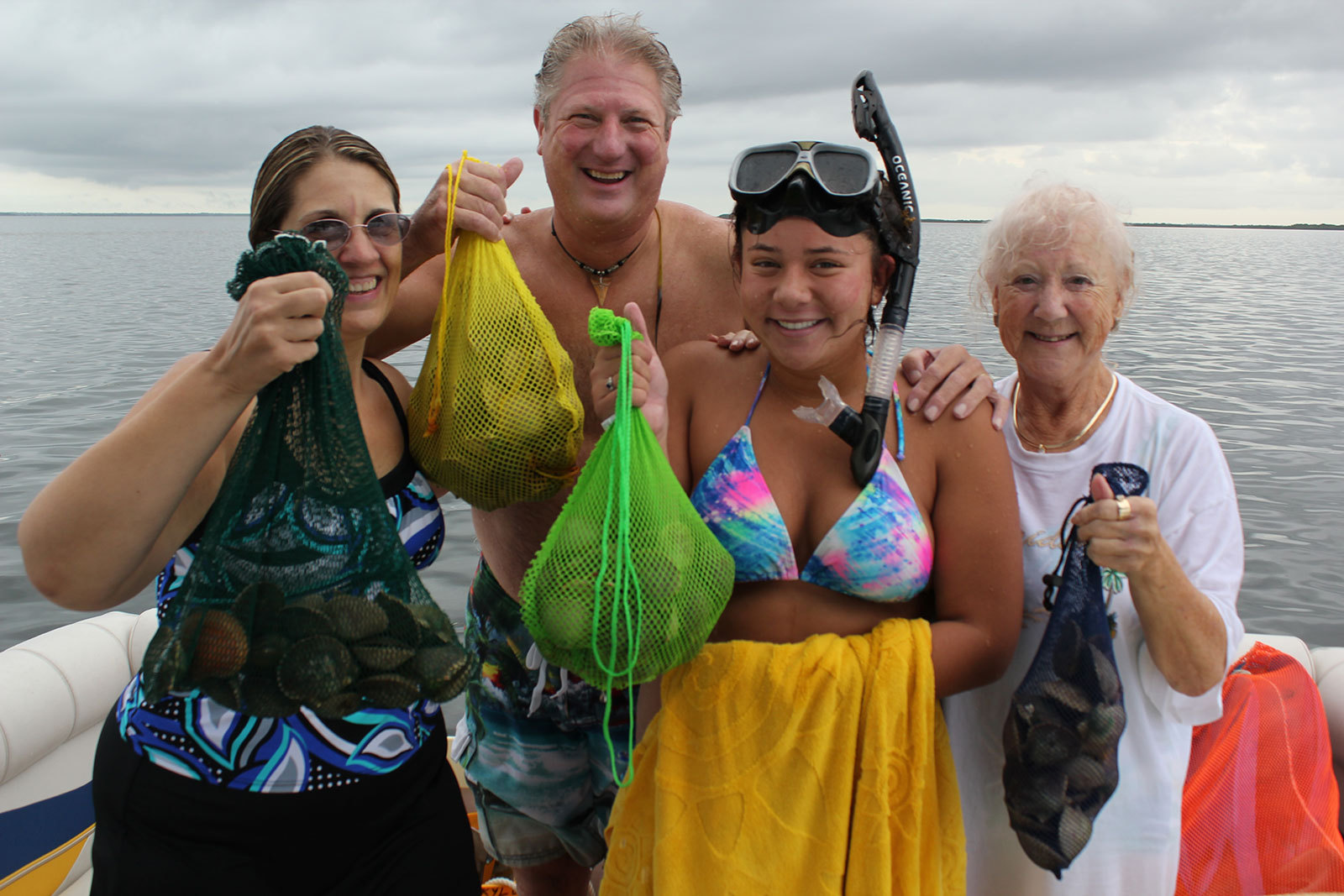Scalloping Information
The Life of a Scallop
Bay Scallops live in shallow, near shore waters along Florida’s Nature Coast, from Chassahowitzka to Crystal River. These palm sized bivalves are usually found nestled in sea grass beds and are easily distinguished from other bottom-dwelling animals by their electric blue eyes and traditional shell gas station sign shell. Bivalves have two valves, or shells joined by a hinge. The Bay Scallop’s upper valve is a dark mottled color, and its lower valve is typically white. Occasionally both shells will be a bright yellow or orange, but these individuals are rare. Bay Scallops are capable of swimming by opening and closing their shells rapidly to generate thrust, which can make catching them more challenging.
A Scallop’s normal life cycle takes place over 12-18 months, although a small proportion of Scallops may survive for 24 months or more. Each year local populations must produce enough offspring to replace themselves, or receive offspring from neighboring populations. Because individual Scallops only live for about one year, population fluctuations occur regularly.
Strict limits have been imposed during Scallop season allowing 2 gallons person but no more than 10 gallons per boat. Bay Scallop management has been an important factor in the rejuvenation of the stock and if recent trends have any indication on future Scalloping stocks, the Scalloping along the Nature Coast should continue to thrive for years to come.
Harvesting Scallops
Harvesting scallops is easily one of the more effortless yet rewarding water activities found any where in Florida. The equipment needed to harvest scallops is limited to just a mask, snorkel, fins, and a mesh bag. For young children that are not yet comfortable swimming on their own any type of flotation device is recommended.
Most Scallop harvesting is done in crystal clear waters ranging from 2-8ft. Some of the best areas to find scallops are on shallow grass flats, sponge beds, and small coral reefs. The added bonus when covering areas with shallow clear water is that there are tons of other species that one will see while floating along looking for scallops. Crabs, fish, sea horses, dolphins, rays, sponges, and sea turtles are just a few of the many species that one will encounter while searching for scallops.
The most successful method for harvesting scallops is to swim against the current when first looking for scallops and then allow the current to drift you back to your vessel. Best places to look for scallops are on the tops of the long eel grass, amongst the dark patches of rolling moss (brown floating grass), and on the edges of sponge beds. The key to successful scalloping is to not stir up the bottom once you have located a few scallops. Once you have located your honey-hole slowly float back to the surface and evaluate the surrounding area. Chances are once you have located one scallop, there are probably many more located with in the same vicinity.




